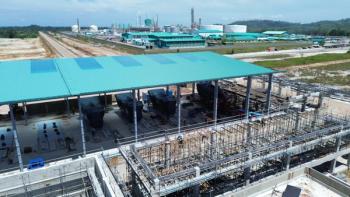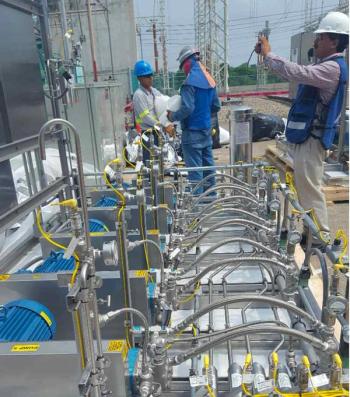
HydrogenPro to Provide Electrolyzers, Gas Separation Skids for Mitsubishi Power
Before commissioning the 40 electrolyzers and 20 gas separation skids, Mitsubishi Power is performing a long-term validation of the technology at Takasago Hydrogen Park.
HydrogenPro has received a contract for the delivery of 40 electrolyzers and 20 gas-separation skids to Mitsubishi Power Americas. Prior to commissioning HydrogenPro’s technology in the United States, Mitsubishi Power will perform long-term validation of the skids and electrolyzers at the Takasago Hydrogen Park in Japan. The electrolyzer design will be used for the utility-scale production of green hydrogen at a hub currently under construction.
HydrogenPro’s large-scale 5.5 MW single stack high-pressure alkaline electrolyzer is being validated in two stages. Initially, a single unit was installed and tested at a facility in Norway’s Herøya Industrial Park. This testing covered extensive operational parameters and a short-term validation accrued a 96-hour baseload run of safe and reliable operation. The technology is currently undergoing Mitsubishi Power’s long-term validation at the Takasago Hydrogen Park.
As the long-term validation commences, the electrolyzer unit operates at full load in real-world conditions. Validation objectives include performance, operations, start-ups, shutdowns, gas quality, safety, and digital control integration.
The electrolyzer design will be used for the production of green hydrogen at Mitsubishi Power’s Advanced Clean Energy Storage (ACES) Hub in Delta, UT—the project will convert and store up to 100 metric tons per day of clean hydrogen. The ACES Hub is a joint development between Chevron New Energies and Mitsubishi Power, with HydrogenPro delivering the first installment of electrolyzers.
Scheduled to begin operations in 2025, the ACES Hub will use HydrogenPro’s electrolyzers to split water into oxygen and hydrogen. From here, the green hydrogen produced will be stored in two large salt caverns located 444 meters underground. These salt caverns are each capable of storing 150 GWh of energy for dispatch to the grid when required.
Newsletter
Power your knowledge with the latest in turbine technology, engineering advances, and energy solutions—subscribe to Turbomachinery International today.





